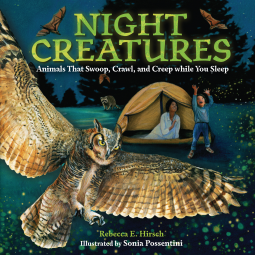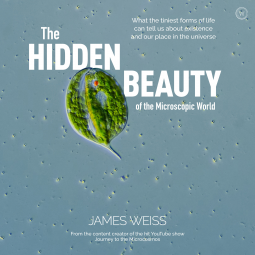Dig, Dance, Dive: How Birds Move to Survive is a beautifully illustrated book. The watercolor artwork is very well done and the book is worth a look even before getting into the text of the book. I never thought too much about how birds moved, aside that most flew and some swam. This book gives a nice look at some of the more unusual movements of birds and how they impact the survival and lives of the birds. This is a great book for the elementary and younger set- to read alone or share with an adult or older child.
Early Book Review: Dig, Dance, Dive: How Birds Move to Survive by Etta Kaner, June Steube
Dig, Dance, Dive: How Birds Move to Survive is a beautifully illustrated book. The watercolor artwork is very well done and the book is worth a look even before getting into the text of the book. I never thought too much about how birds moved, aside that most flew and some swam. This book gives a nice look at some of the more unusual movements of birds and how they impact the survival and lives of the birds. This is a great book for the elementary and younger set- to read alone or share with an adult or older child.
Early Book Review: The World of Coral Reefs: Explore and Protect the Natural Wonders of the Sea by Erin Spencer
Book Review: Two Heads: A Graphic Exploration of How Our Brains Work with Other Brains by Uta Frith; Chris Frith; Alex Frith
Two Heads: A Graphic Exploration of How Our Brains Work with Other Brains was written by Uta Frith, Chris Frith, and Alex Frith, and illustrated by Daniel Locke. Professors and husband-and-wife team Uta and Chris Frith have pioneered major studies of brain disorders throughout their nearly fifty-year career. Here, in Two Heads, their distinguished careers serve as a prism through which they share the compelling story of the birth of neuroscience and their paradigm-shifting discoveries across areas as wide-ranging as autism and schizophrenia research, and new frontiers of social cognition including diversity, prejudice, confidence, collaboration, and empathy. Working with their son Alex Frith and artist Daniel Locke, the professors examine the way that neuroscientific research is now focused on the fact we are a social species, whose brains have evolved to work cooperatively. They delve into a wide range of complex concepts and explain them with humor and clarity. You’ll discover what happens when people gather in groups, and how people behave when they’re in pairs—either pitted against each other or working together. Is it better to surround yourself with people who are similar to yourself, or different? And, are two heads really better than one?
Two Heads offers readers a solid understanding of the brain, and all it wonders and misfires. I like that opposing viewpoints are mentioned, and that the fact that these two experts openly admit that they disagree on some topics. I like how the text makes it clear what experts think they know, that there are various schools of thought, and just how much we still have to learn. It is when scientists or experts proclaim that we have all the answers that they loose credibility with me. I thought the illustrations were charming, and I liked the labels, humor, and hidden details which made each page more engaging and interactive. I think it was written in a very accessible style, with humor and explanations that really work. I found the personal touches and side comments made the book more entertaining and broke up some of the more intense teaching moments to help readers process. I think it is honestly approachable to any reader interested in the subject matter. As expected of a book from scholars and professionals, the footnotes and endpages were on point and well done. I think this would be a great addition to libraries, particularly graphic medicine collection (I will be recommending it for my own workplace just for that reason).
Early Book Review: Girls Solve Everything: Stories of Women Entrepreneurs Building a Better World by Catherine Thimmesh, Melissa Sweet
Early Book Review: Science Art and Drawing Games for Kids: 35+ Fun Art Projects to Build Amazing Science Skills by Karyn Tripp
Book Review: Extinctions: Twilight of the Species by Jean-Baptiste De Panafieu, Alexandre Franc
Book Review: Adventures in Architecture for Kids: 30 Design Projects for STEAM Discovery and Learning by Vicky Chan
Early Book Review: Where Did We Come From?: A Simple Exploration of the Universe, Evolution, and Physics by Chris Ferrie
Early Book Review: Blowholes, Book Gills, and Butt-Breathers: The Strange Ways Animals Get Oxygen by Doug Wechsler
Blowholes, Book Gills, and Butt-Breathers: The Strange Ways Animals Get Oxygen by Doug Wechsler is currently scheduled for release on December 7 2021. This is the latest installment of the How Nature Works series.
Book Review: Ocean Planet: Animals of the Sea and Shore by Ben Rothery
Early Book Review: Friends Change the World: We Are the NASA Scientists by Zoë Tucker, Amanda Quartey
Early Book Review: Underwater Wild: My Octopus Teacher's Extraordinary World by Craig Foster; Ross Frylinck
I have to admit that I picked Underwater Wild to read because of the photography. Seriously, the images are stunning and well worth a look at the book all on their own. They are simply stunning. The text is well written and talks about much more than the marine life feature. The narrative style brings readers along for the ride, showing rather than telling about what has been seen and learned. It is about marine life, exploration, family, relationships, and more. When paired with the photographs, the text gives an extra layer of wonder and heart to the book as a whole. I think this book will appeal to a wide range of readers, and some will definitely be taking more time to enjoy the pictures than the text, no mater how moving or interesting the information shared.
Book Review: Stolen Science by Ella Schwartz
Early Book Review: Black Hole Chasers: The Amazing True Story of an Astronomical Breakthrough by Anna Crowley Redding
Black Hole Chasers: The Amazing True Story of an Astronomical Breakthrough by Anna Crowley Redding is currently scheduled for release on October 5 2021. In April 2019, the Event Horizon Telescope Team unveiled the first ever image of a super massive black hole. This inspiring scientific breakthrough took years of hard work, innovative thinking, and a level of global cooperation never seen before. The challenge was immense. The goal was impossible. They would need a telescope as big as the earth itself. The technology simply didn’t exist. And yet, a multi-national team of scientists was able to show the world an image of something previously unseeable. Based off extensive research and hours interviews with many of the team's ground-breaking scientist, physicists, and mathematicians, Black Hole Chasers is a story of unique technological innovation and scientific breakthroughs, but more importantly, it's a story of human curiosity and triumph.
Early Book Review: Tracking Tortoises: The Mission to Save a Galápagos Giant by Kate Messner
Early Book Review: Night Creatures: Animals That Swoop, Crawl, and Creep while You Sleep by Rebecca E. Hirsch, Sonia Possentini
Early Book Review: Water: A Visual and Scientific History by Jack Challoner
Early Book Review: Volcano, Where Fire and Water Meet by Mary M. Cerullo
Volcano, Where Fire and Water Meet by Mary M. Cerullo is a children's nonfiction book currently scheduled for release on August 1 2021. Lava shoots in the air, then bubbles down mountains, flattening, burning, and boiling everything in its path. The destructive forces of volcanoes are terrifying and well-known. But what about their other forces? Volcanoes can spur new growth of plants and trees. In the water, they create an environment where coral reefs and sea life can thrive. In fact, the meeting of volcanic fire and ocean water gave way to life on Earth.Stitching science, history, and mythology together, Cerullo explores these explosive wonders of nature and reveals the secrets they’ve been keeping since the beginning of the world.
Volcano, Where Fire and Water Meet is exactly what I expect from nonfiction published by Scholastic. The content is well written and researched It is informative and accessible to a range if readers without feeling too easy or too complicated at any point. The chosen images where a perfect pairing to the text- offering visual interest and detail in the subject matter. Frankly, I went back to look at the images for a second time after I finished my first read, since I found them to be simply fascinating. I really like that there was a glossary, source notes, and bibliography included i the endpages. This always make me happy- not only because it gives readers a chance to further explore the topic, but because it helps them see that these this are necessary when writing books or papers.
I think this would be a perfect book for readers interested in the subject. It is also a book that would be a valuable resource in classrooms and libraries to aid in lessons on the subject, and to get students engaged and excited about the subject.





















